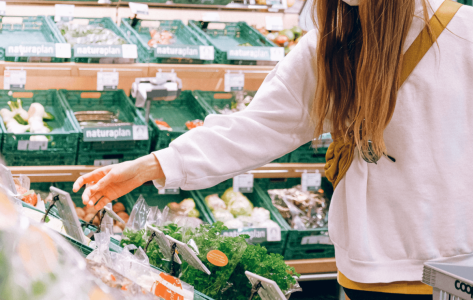Grocery price shock: Australians paying more than ever for weekly shopping essentials
- Replies 31
As savvy shoppers, we're no strangers to adapting our lifestyles and budgets to accommodate rising living costs.
However, the recent spike in grocery prices has us particularly taken aback, as it seems that the cost of our weekly shopping trips has soared to record highs—and our stretched budgets are feeling the pinch.
An analysis conducted by Daily Mail Australia revealed the shocking increase in prices for staple household items, with costs rising up to a staggering 106% in just four short years.
This far exceeds the current inflation rate of 7%, which is already putting a significant strain on our wallets.
These price hikes have had a domino effect, with consumers understandably tightening their belts and cutting back on discretionary spending like entertainment, beauty care, insurance, and even takeaway coffee.
However, even with these sacrifices, many Aussies are still reportedly struggling to cope with escalating living costs, such as soaring electricity bills and skyrocketing mortgage repayments.
Let's take a closer look at some of the products that have experienced the sharpest price increase.
The Coca-Cola 10-can multi-pack has jumped from $7.80 to a whopping $16.10, while Lurpak Lighter Blend Spreadable Butter rose from $4 to $7.50. And for those of us with a sweet tooth, a block of Cadbury milk chocolate has seen a price increase from $4.79 to $5.50.
Coles and Woolworths regularly match prices for staple items, causing many shoppers to alternate between the two supermarkets depending on weekly sales. In fact, some customers even visit both supermarkets each week to maximise their savings—an unfortunate necessity in today's tough economic climate.
The cost of food and groceries is now a foremost concern for Australians nationwide. Many families are cutting back on essential items such as cereals, berries, seafood, and even our favourite comfort food, chips.
A once $12 tin of Milo has risen to $15, while a $4 box of Weet-Bix now costs $6. Even household essentials like McCain's frozen peas (rising from $2 to $3.30), Vegemite ($9 instead of $8), and castor sugar (jumping from $2 to $3) haven't been spared.
These steep increases in grocery prices have combined with other financial pressures to place a significant burden on Australian households.

Finder, a popular financial comparison site, surveyed Australians and found weekly grocery spending surged to an average of $185—a staggering increase of almost $40 compared to a year ago.
Sarah Megginson, Finder's money expert, explained that this amounts to an extra $1,924 per year per household or a total increase of $18.8 billion nationwide.
'Households are facing some very tough times, and escalating grocery costs are an extra burden. Aussies are having to change how and where they shop just to keep food on the table,’ she explained.
In the survey, 43% of respondents cited grocery shopping as one of the top three 'most stressful expenses' in their budgets. New South Wales residents were found to spend the most on groceries, averaging $187 per week, followed by Victorians ($184), Queenslanders ($176), and South Australians ($160).
AMP Deputy Chief Economist, Diana Mousina, warned that a single extra interest rate hike could potentially spark a recession, given the already vulnerable state of the Australian economy.
She explained, 'The RBA's hawkishness and subsequent likelihood of another interest rate hike in July or August mean that a “real” recession is a high possibility in the next 12 to 18 months.'

In light of these trends, it's more important than ever for us shoppers to stay informed, adapt, and find ways to manage our budgets as efficiently as possible. Embrace your resourcefulness, shop smart, and seek discounts wherever possible. You might like to check out the SDC Discount Directory.
Have you noticed how the rising grocery prices have affected your weekly shopping? We're curious to hear about your experiences and any clever strategies you might have for saving money at the checkout. Share your thoughts and tips with us in the comments section below!
However, the recent spike in grocery prices has us particularly taken aback, as it seems that the cost of our weekly shopping trips has soared to record highs—and our stretched budgets are feeling the pinch.
An analysis conducted by Daily Mail Australia revealed the shocking increase in prices for staple household items, with costs rising up to a staggering 106% in just four short years.
This far exceeds the current inflation rate of 7%, which is already putting a significant strain on our wallets.
These price hikes have had a domino effect, with consumers understandably tightening their belts and cutting back on discretionary spending like entertainment, beauty care, insurance, and even takeaway coffee.
However, even with these sacrifices, many Aussies are still reportedly struggling to cope with escalating living costs, such as soaring electricity bills and skyrocketing mortgage repayments.
Let's take a closer look at some of the products that have experienced the sharpest price increase.
The Coca-Cola 10-can multi-pack has jumped from $7.80 to a whopping $16.10, while Lurpak Lighter Blend Spreadable Butter rose from $4 to $7.50. And for those of us with a sweet tooth, a block of Cadbury milk chocolate has seen a price increase from $4.79 to $5.50.
Coles and Woolworths regularly match prices for staple items, causing many shoppers to alternate between the two supermarkets depending on weekly sales. In fact, some customers even visit both supermarkets each week to maximise their savings—an unfortunate necessity in today's tough economic climate.
The cost of food and groceries is now a foremost concern for Australians nationwide. Many families are cutting back on essential items such as cereals, berries, seafood, and even our favourite comfort food, chips.
A once $12 tin of Milo has risen to $15, while a $4 box of Weet-Bix now costs $6. Even household essentials like McCain's frozen peas (rising from $2 to $3.30), Vegemite ($9 instead of $8), and castor sugar (jumping from $2 to $3) haven't been spared.
These steep increases in grocery prices have combined with other financial pressures to place a significant burden on Australian households.

Australians now spend $185 weekly on groceries - almost $40 more than a year earlier. Credit: Coles, Woolworths.
Finder, a popular financial comparison site, surveyed Australians and found weekly grocery spending surged to an average of $185—a staggering increase of almost $40 compared to a year ago.
Sarah Megginson, Finder's money expert, explained that this amounts to an extra $1,924 per year per household or a total increase of $18.8 billion nationwide.
'Households are facing some very tough times, and escalating grocery costs are an extra burden. Aussies are having to change how and where they shop just to keep food on the table,’ she explained.
In the survey, 43% of respondents cited grocery shopping as one of the top three 'most stressful expenses' in their budgets. New South Wales residents were found to spend the most on groceries, averaging $187 per week, followed by Victorians ($184), Queenslanders ($176), and South Australians ($160).
AMP Deputy Chief Economist, Diana Mousina, warned that a single extra interest rate hike could potentially spark a recession, given the already vulnerable state of the Australian economy.
She explained, 'The RBA's hawkishness and subsequent likelihood of another interest rate hike in July or August mean that a “real” recession is a high possibility in the next 12 to 18 months.'
Key Takeaways
- Australians are experiencing rising prices in staple products, with costs increasing by as much as 106% in just four years.
- Electricity bills and mortgage repayments are also rising, adding to household financial strain.
- The Australian Bureau of Statistics listed an 8% inflation rate for food and non-alcoholic beverages in the year to April 2023, and a Finder survey found Australians are spending $185 per week on groceries, $40 more than last year.
- AMP Deputy Chief Economist Diana Mousina predicts a 'real' recession is a high possibility in the next 12 to 18 months due to the likelihood of another interest rate hike.
In light of these trends, it's more important than ever for us shoppers to stay informed, adapt, and find ways to manage our budgets as efficiently as possible. Embrace your resourcefulness, shop smart, and seek discounts wherever possible. You might like to check out the SDC Discount Directory.
Have you noticed how the rising grocery prices have affected your weekly shopping? We're curious to hear about your experiences and any clever strategies you might have for saving money at the checkout. Share your thoughts and tips with us in the comments section below!








